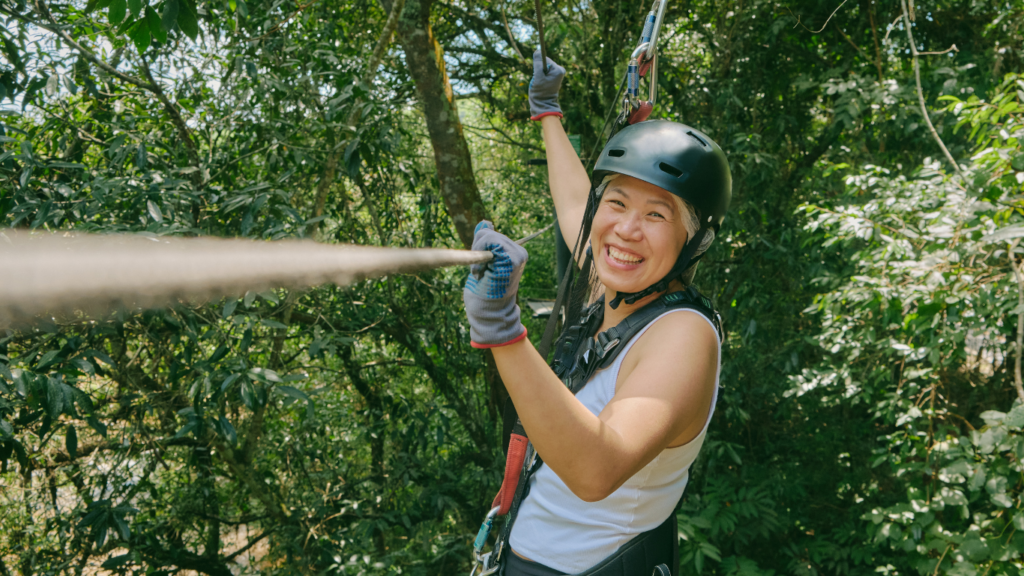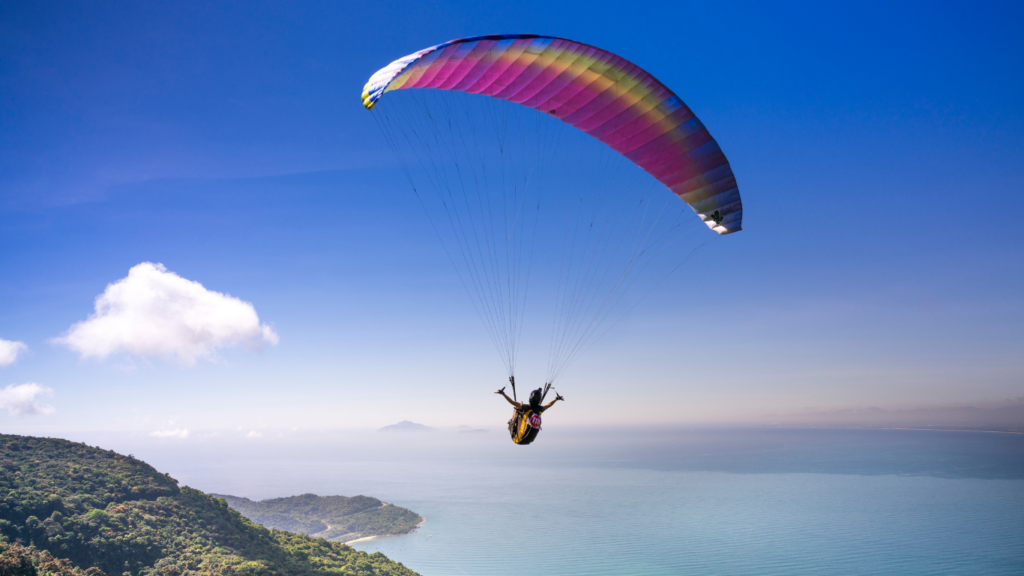Benefits of a Multi-Sport Adventure
Embarking on a multi-sport adventure offers diverse physical challenges. Switching between activities like hiking, biking, and kayaking engages different muscle groups, improving overall fitness. Diverse experiences also reduce repetitive strain injuries common in single-sport excursions.
Mental benefits abound. Combining different sports prevents monotony, keeping the mind engaged and excited. This variety stimulates mental resilience, helping to overcome different types of challenges each sport presents.
Exploring varied landscapes adds another dimension. Moving from mountains to rivers to trails allows for deeper immersion in the natural surroundings. Each sport offers unique vantage points, enriching the overall appreciation for the environment.
Participating in multiple sports fosters skill development. Shifting between different activities forces adaptation and learning new techniques. These cross-disciplinary skills enhance overall proficiency and confidence in handling varied terrains and conditions.
Social interaction often improves during a multi-sport adventure. Sharing multiple activities enables stronger bonding with travel companions. People connect over shared experiences, building lasting memories and deepening relationships.
Choosing Your Activities
Selecting the right combination of activities can make or break your multi-sport adventure. Consider your interests, skill levels, and the environment where you’ll be adventuring.
Land Activities
Land activities offer various ways to explore terrains. Hiking, mountain biking, and trail running are popular options. Hiking unfolds scenic vistas and fresh air. Mountain biking provides an adrenaline rush, and trail running enhances endurance. Consider trail difficulty and your fitness when choosing. Rock climbing and horseback riding are also exciting options that engage different muscle groups and skills.
Water Activities
Water activities can add a refreshing element to your adventure. Kayaking, stand-up paddleboarding, and canoeing provide peaceful exploration of lakes and rivers. Each activity requires different skill sets; for instance, kayaking demands upper body strength, while paddleboarding challenges balance. Snorkeling and scuba diving reveal underwater worlds, offering unique experiences. Prioritize safety by checking water conditions and having proper gear.
Air Activities
Air activities offer a thrilling dimension to your adventure. Paragliding, skydiving, and hot air ballooning deliver unforgettable experiences from above. Paragliding combines skill with serenity, while skydiving provides an adrenaline spike. Hot air ballooning offers a tranquil aerial view. Consider your comfort with heights and the safety records of providers when choosing these activities.
Choosing activities that span land, water, and air enriches your adventure, providing varied experiences and enhancing the overall journey.
Planning Your Itinerary
Creating a detailed itinerary is crucial for a successful multi-sport adventure. By scheduling activities and considering logistics, I can ensure the experience is both enjoyable and manageable.
Time Management
Efficient time management is key to a seamless adventure. I’ll need to allocate time for each sport and consider travel between locations. For instance, if I plan to hike in the morning and kayak in the afternoon, I’ll include buffer time to rest and transition between activities. Knowing the duration of each activity helps avoid overlaps and ensures I’ve ample time for meals and relaxation.
Balancing Activities
Balancing activities is essential to maintain energy and enthusiasm. I’ll mix high-intensity sports with more relaxed ones to prevent burnout. For example, pairing a strenuous mountain biking session with a leisurely hot air balloon ride allows me to enjoy diverse experiences without exhausting myself. I’ll also consider weather conditions and optimal times for each sport, ensuring all activities fit well within the overall schedule.
Essential Gear and Equipment
Choosing the right gear can make or break a multi-sport adventure. Identifying must-have items and adhering to smart packing tips ensures a smooth and enjoyable experience.
Must-Have Items
- Footwear – Quality shoes fit for hiking, running, and biking ensure comfort and prevent injuries. For instance, hiking boots provide ankle support, while biking shoes offer pedal grip.
- Apparel – Weather-appropriate clothing, including moisture-wicking shirts, thermal layers, and waterproof jackets, prepares for varying conditions. Convertible pants are versatile for both hiking and biking.
- Navigation Tools – GPS devices or maps and compasses help navigate trails and water routes. Ensuring these tools are up-to-date minimizes risks of getting lost.
- Hydration Systems – Hydration packs or bottles are vital, especially for long activities like mountain biking or trekking. Opt for packs with a high capacity and easy-access tubes.
- First Aid Kit – A compact first aid kit, including bandages, antiseptics, and pain relievers, handles minor injuries. Including sport-specific items like blister pads can be beneficial.
- Multi-Tools – Multi-tools with screwdrivers, pliers, and knife blades assist with equipment repairs. Cyclists should carry bike-specific tools for quick fixes.
- Safety Gear – Helmets, knee pads, and life vests should never be overlooked. Prioritize safety, particularly in high-risk sports like kayaking and mountain biking.
- Categorize Items – Group essentials by activity for easy access. For example, keep all biking gear in one section and kayaking gear in another.
- Use Waterproof Bags – Store valuables in waterproof bags to protect them from rain or water exposure during kayaking. Items like electronic devices and clothing remain dry.
- Opt for Lightweight Gear – Choose lightweight, compact gear to ease carrying loads. Ultralight tents, compact sleeping bags, and inflatable pads ensure comfort without bulk.
- Roll Clothing – Rolling items instead of folding maximizes bag space. This technique keeps clothing wrinkle-free and organized.
- Prioritize Accessibility – Place frequently used items like jackets, snacks, and water bottles in easily accessible compartments. Quick access is crucial during rapid weather changes or short breaks.
- Double-Check Essentials – Verify all necessary items are packed before departure. Creating a checklist helps ensure nothing is forgotten.
Essential gear and astute packing techniques boost the success and enjoyment of any multi-sport adventure.
Health and Safety Considerations

Proper health and safety considerations are crucial when planning a multi-sport adventure. Ensuring physical readiness and adhering to safety tips can make your adventure both enjoyable and risk-free.
Physical Preparation
Engage in specific physical training to prepare for different sports. Incorporate endurance activities like running, swimming, and cycling into your routine. Strength training can enhance muscle resilience and aid in injury prevention. Stretching and flexibility exercises improve mobility and reduce strain. Ensure adequate rest and hydration to keep energy levels balanced.
Safety Tips
Follow these key safety tips to ensure a secure adventure:
- Gear Check: Inspect all equipment before heading out. Faulty gear can lead to accidents.
- First Aid Kit: Always carry a fully stocked first aid kit. Include bandages, disinfectants, and pain relievers.
- Weather Monitoring: Check weather forecasts for your planned dates. Unexpected weather changes can affect safety.
- Communication: Have a reliable means of communication. Inform someone about your itinerary and expected return.
- Emergency Plan: Develop an emergency plan specifying actions for different potential scenarios. Include escape routes and emergency contacts.
- Nutrition: Pack sufficient high-energy, nutritious snacks. Consistent energy intake is vital for performance and recovery.
- Hydration: Stay hydrated by carrying enough water. Hydration systems can be convenient for ease of access.
Taking health and safety seriously ensures that your multi-sport adventure is a memorable and secure experience.
Budgeting for Your Adventure
Effective budgeting ensures you enjoy your multi-sport adventure without financial stress.
Cost Estimation
Estimate potential costs by categorizing them. Main categories include travel, accommodation, food, gear, activity fees, and insurance. Factor in travel expenses like flights or gas. Estimate accommodation costs per night based on location and type, such as hotels or campsites. Plan food expenses by calculating daily costs for meals and snacks. Evaluate gear expenses for essential equipment like backpacks, bikes, and kayaks. Consider fees for activities such as guided tours or entry to national parks. Always budget for insurance to cover unforeseen incidents.
Money-Saving Tips
Save money by booking early for discounts on travel and accommodation. Use loyalty programs for flights or hotels. Opt for budget-friendly lodging options like hostels or shared rentals. Prepare your meals rather than dining out. Rent gear locally instead of buying new, which reduces costs and luggage hassle. Look for bundled activity packages to save on fees. Travel during off-peak seasons to avoid higher costs. Compare and choose insurance policies that offer comprehensive coverage at competitive rates.
Keep these budgeting tips in mind to maximize your adventure experience without breaking the bank.




